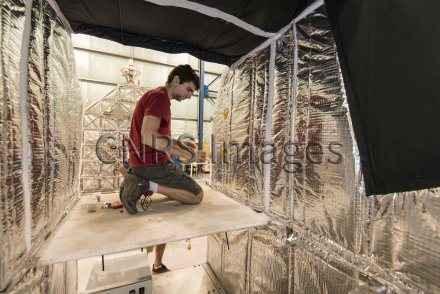Production year
2017

© Sébastien CHASTANET / CNES / OMP / IRAP / UT3 / CNRS Images
20170104_0050
The PILOT gondola being prepared at the balloon launch base in Alice Springs, in Australia. The PILOT astronomical science gondola, with a telescope payload, has been designed for use in studying the origins of the universe. Its purpose is to measure submillimetric polarised emissions from interstellar dust. More specifically, the project aims to map the magnetic fields in the interstellar clouds of the Milky Way, and study their role in star formation These unprecedented measurements are being made using a stratospheric balloon to which the instrument gondola is attached. Measurements are more economical and simpler to perform using balloons than using satellites. Launched to a height of 40 km on 16 April 2017, PILOT gathered data that would have been impossible to collect using ground-based telescopes, as the Earth's atmosphere partially blocks cosmic radiation.
The use of media visible on the CNRS Images Platform can be granted on request. Any reproduction or representation is forbidden without prior authorization from CNRS Images (except for resources under Creative Commons license).
No modification of an image may be made without the prior consent of CNRS Images.
No use of an image for advertising purposes or distribution to a third party may be made without the prior agreement of CNRS Images.
For more information, please consult our general conditions
2017
Our work is guided by the way scientists question the world around them and we translate their research into images to help people to understand the world better and to awaken their curiosity and wonderment.